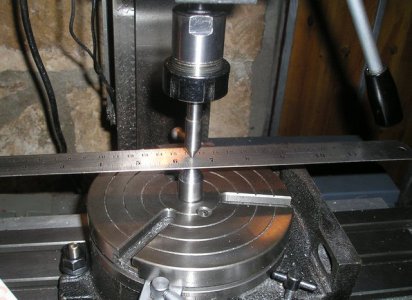B
BRIAN
Forum Guest
Register Today
I needed to set up the table on the mill for a quick job that had to be reasonably accurate
and I thought that if two centres are good enough to determine lathe accuracy they may well do the job on the mill
I am probably not the first to try this but it's worth a mention.

It worked perfectly for me, the centres can also be tested for accuracy by revolving the quill or table.
Brian.

and I thought that if two centres are good enough to determine lathe accuracy they may well do the job on the mill
I am probably not the first to try this but it's worth a mention.

It worked perfectly for me, the centres can also be tested for accuracy by revolving the quill or table.
Brian.


